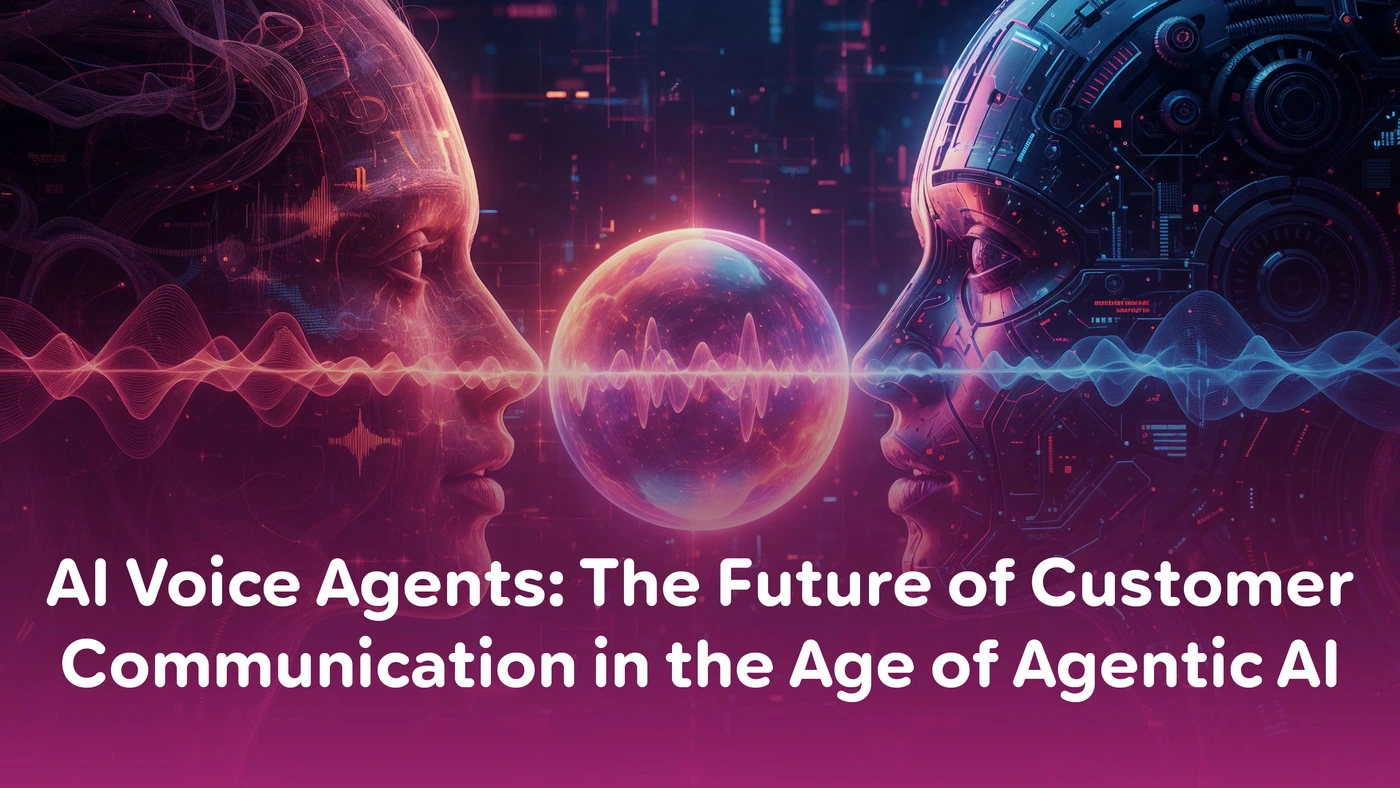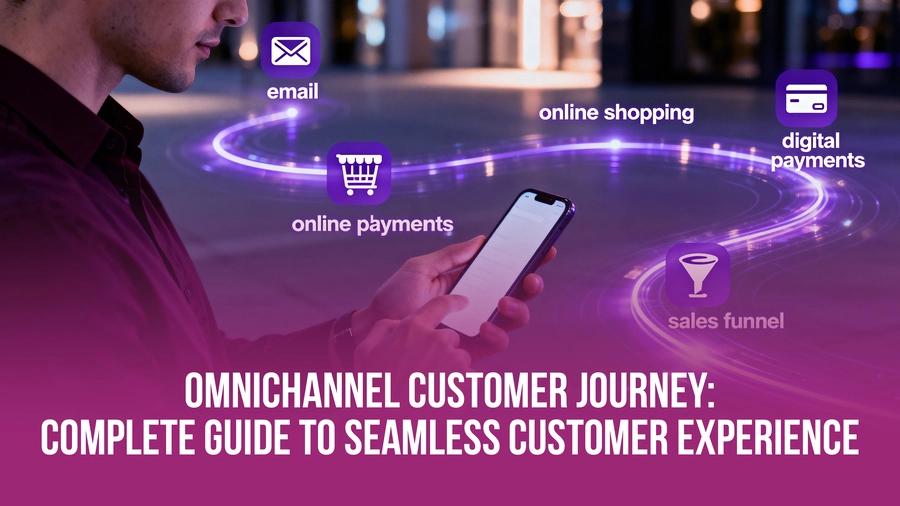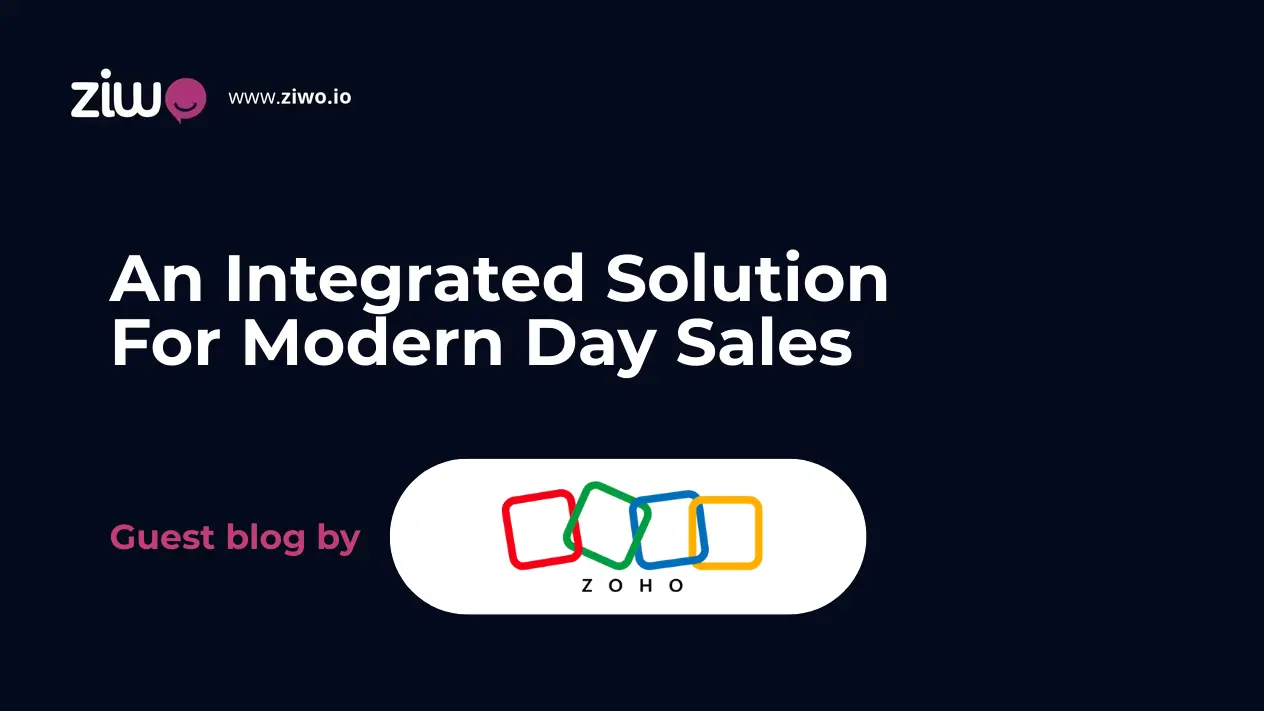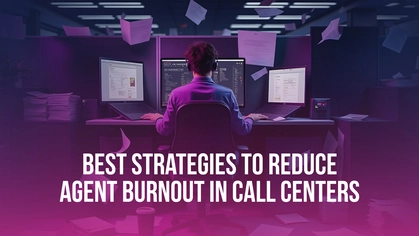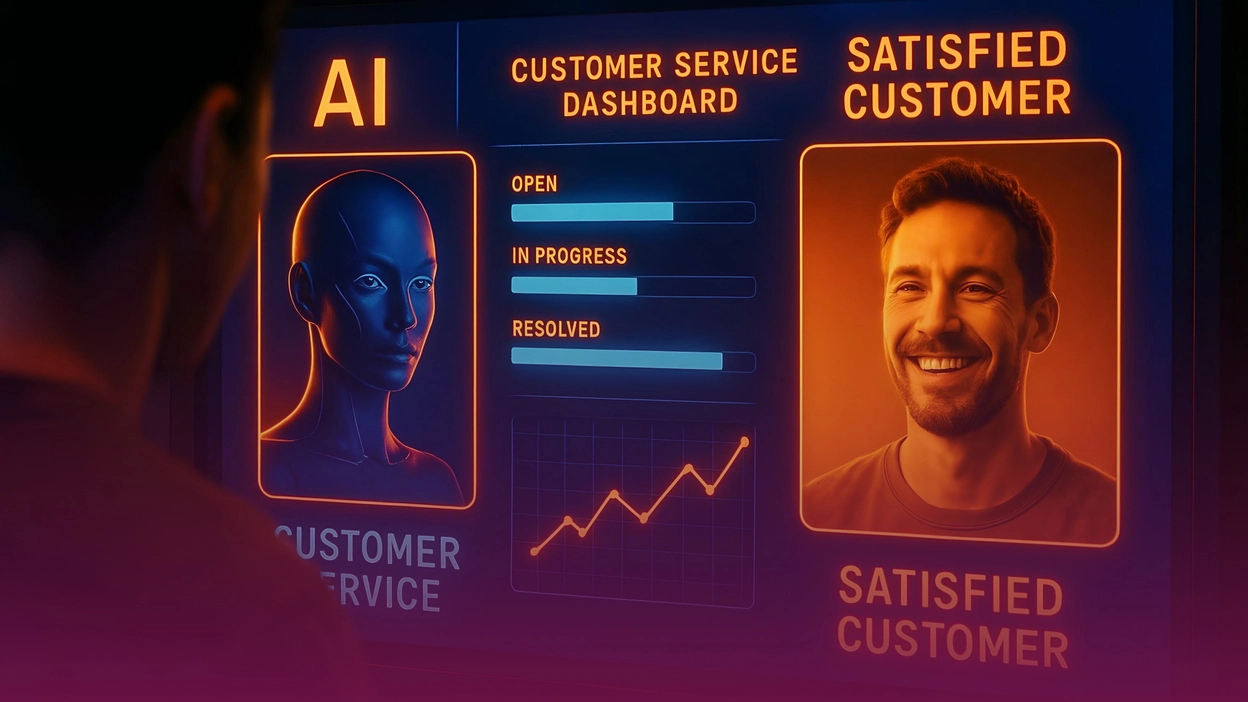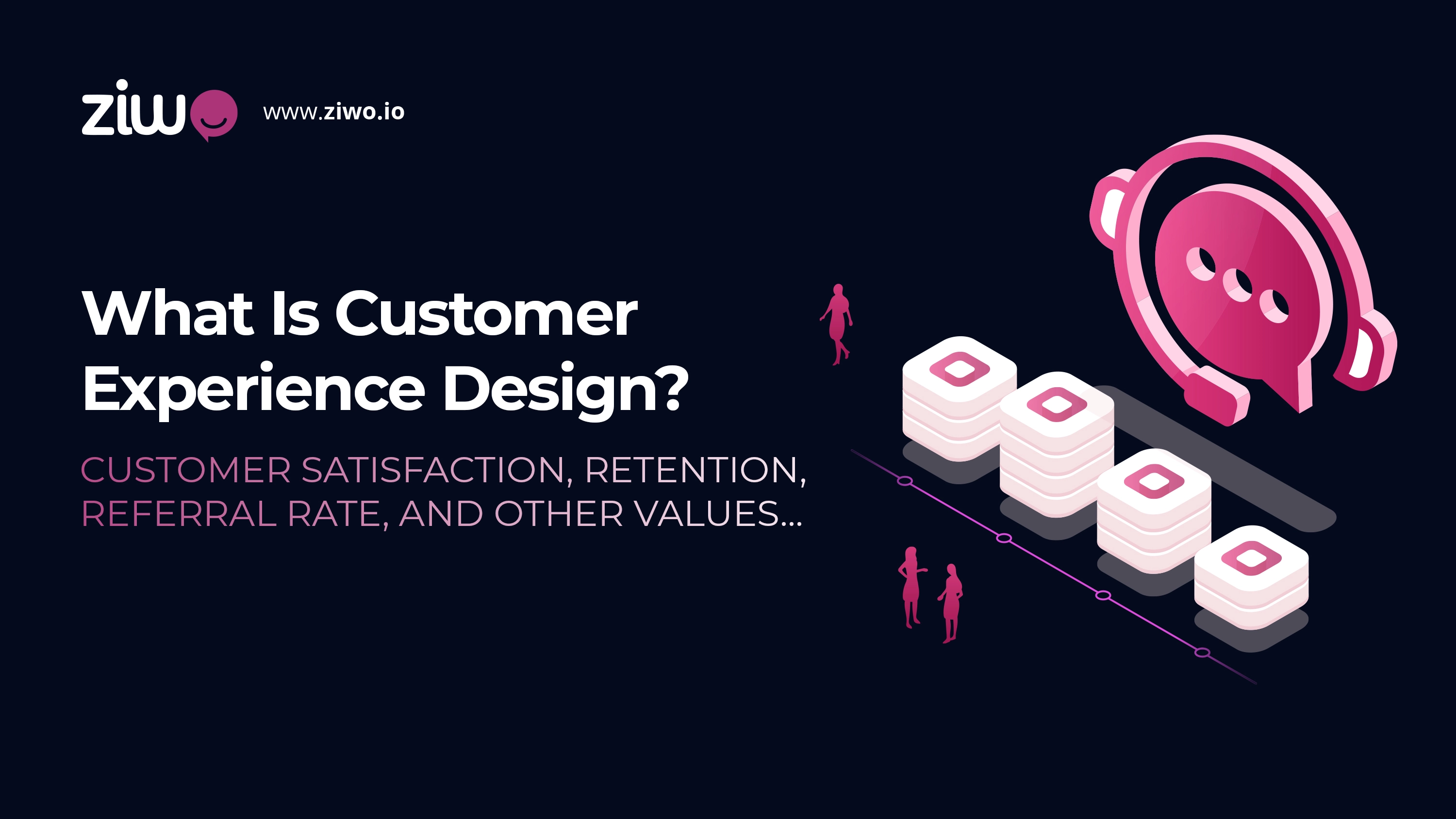
What Is Customer Experience Design?
Customer experience design is a continuous process that improves all customer touchpoints with the business to develop interactions to the aimed level throughout different stages of the buyer journey, from first contact to after-sales service, whether purchasing a product, subscribing to a recurrent service, or even signing an only-once service contract.
Why Is Customer Experience Design Important?
Without a clear customer experience design outline, customer interactions turn into randomly dispersed strokes of luck, which is professionally unrealistic. No lead will turn into a loyal customer, negatively affecting your business.
From this point of view, customer experience design is essential in every touch point. This includes the instant of conversion and the moment the customer sees the brand for the first time. Satisfaction should accompany the customer from the beginning, and CX design is the sauce that keeps his appetite open to repeat the interaction.
What Are the Customer Experience Design Principles?
Customer experience design principles could be countless. However, we’ll mention just the three major principles from which all other principles might dissect, whatever the work field or the customer persona.
1- Determine Customer Touchpoints
To recognize customer experience and design it suitably, you should know the details of the journey that every qualified lead persona passes through till they become an excellent, loyal customer.
If you specify the journey, the touchpoints appear clearly. They are every point at which the customer intersects with your brand in a typical day's life. Through customer experience design, you should ensure that each point is friction-free and has no obstacles that might make the lead lose interest just at this touchpoint or after a short period from this incident.
So, the touchpoints are the most important in every customer experience to be cared about. You'll need to make this touchpoint smooth enough to keep the lead in the sales funnel. If disturbing, it will drive them to churn.
Touchpoints vary as the lead spends more time with the business. At some touchpoints, customers are just senders; other times, they’re only receivers, and at some points, they’re both.
Customer experience design principles are applied in all departments at the time; scan these examples:
- Your lead has just viewed a sponsored video ad on social media platforms, such as YouTube. (In this case, the lead is a receiver.)
- A follower left a comment on a social media post via Facebook, asking a question. (The follower at this touchpoint is a sender.)
- One of your sales reps has made a cold call to a lead for discovery purposes to determine the pain points and the challenges he’s struggling with. (In this time, the lead is both sender and receiver.)
In the first example, You might see an ad as part of a marketing campaign. You’re right! Marketing has goals; marketing executives are waiting for leads to perform a specific action, such as scanning a QR code to explore your business's services. Here, the marketing executive is not for the lead to convert; the goal is letting the lead recognize your brand, and that’s it! The experience starts with the scan action, we can discuss the following:
- Has the lead scanned the QR easily?
- Has the web/app page loaded quickly?
- Are the services displayed conveniently and understandably to the lead?
- Is your business' contact info accessible?
2- Make the Experience Consistent and Cohesive
One of the most essential principles of customer experience is the customer's feeling that he’s dealing with the same person throughout his journey. Undoubtedly, the customer knows the actual size of your business and how many employees it hires. However, employees' strict regime lets the customer feel your business's unity.
The qualities of the enterprise personnel you need to formulate in your customers’ minds should be as follows:
- Speaking and writing styles (Formal, casual, moderate) are to be included in all direct and indirect communication platforms.
- Required Response rate.
- Which age group do the employees belong to? The Youth? Middle age? Or undefined?
- Have they used expressions on official business platforms aligned with customers’ popular words, or did your business commit to the original and accurate terms?
- Do you believe an apology is part of the experience you deliver to the customer?
3- Continuously Update the Customer Experience
Imagining that the customer experience should be fixed is like daydreaming. One of the major customer experience design principles is its continuous update. If your company ignores updating the CX, competitors won’t, which attracts more customers toward them. If you’re asking about the most recent customer experience updates, check the following points:
- Omnichannel platforms
- Artificial Intelligence AI
- Whatsapp messaging templates
What Are the Customer Experience Design Process Stages?
If you’re wondering, 'What Is the Customer Experience Design Methodology?' This section provides a complete answer based on our extensive practical experience.
1- Set the Customer Experience Design Objectives
Every new journey has its reasons. Why are you starting the journey of customer experience design? What objectives must you achieve and hope your customer feels its impact? These goals should be SMART:
- Specific
- Measurable
- Relevant
- Achievable
- Time-framed
Examples of goals:
- Increase customer satisfaction rate by 20% during 3 months from the origin point of CX design implementation.
- Increase the customer retention rate by 25% during 6 months from the origin point of CX design implementation.
- Increase the revenue by 15% in 3 months starting from implementation.
2- Customize Customer Experience Design Prinicples
In a previous section, we’ve discussed the three most important customer experience design principles you need to commit to. However, there are other principles that you should customize to suit your business in specific; here are the controlling factors:
- Type of products/services you deliver.
- The brand image you aim to create in the community conscience.
- Buyer persona(s) that your company serves.
- Your company’s vision and mission seek to impact the targeted market.
After creating your business principles that comply with the previous points, you can now design and compare the customer experience to these principles.
3- Specify Accurate Resources to Update the Information About Buyer Persona(s)
As the customer is the most crucial part of every experience equation, you should be sure of the information you’ve gathered about your qualified customer persona(s), their needs, and their preferences so that your design efforts are never wasted.
In this step, you will define the references that tell you what best to do for a more efficient CX design. We recommend the following to use:
- Digital feedback forms: Theyautomatically appear after the customer executes a service request on your website/app.
- Post-call surveys: They automatically play after the agent’s session with the customer ends via phone call, WhatsApp, or a live chat on your app/website.
- Contact center software or customer relationship management CRM software: An essential advantage of these solutions is that they store the number of interactions the customer had with the business, whatever the channel, whether phone, WhatsApp, or otherwise. This helps you determine which communication channels are most preferred and which are less preferred.
4- Construct Detailed Customer Journey Maps for Each Persona
Customer journey maps are paths. The customer chooses a suitable route based on his persona. What steps should a customer take to become loyal to the brand? Here are a few questions that would brainstorm every phase of the journey:
Brand Recognition Stage
- How did the customer know about your business at the early beginning? Did he enter a specific term into a search engine, and a result your company has published appears organically? Did he look for a particular service, and did the company emerge as one of the sponsored search results? Did a sponsored display ad appear while he was scrolling through social media or navigating the web? Has he known one of your company's services because he follows an influencer who mentioned it? Has he heard of the company from a friend or a family member?
- What drove the lead to click on the link? What value has triggered him to search for your company in particular?
- What channel does the lead most often use to recognize the brand? The website? The social media platform? The chatbot?
Setting Expectations Stage
- What are the goals the lead expects to achieve with the help of your business when signing a contract?
- What pain points do customers believe your company will resolve regarding conversion?
Conversion Stage
- What channel drove the lead to convert and purchase the product? Was the website enough? Has social media presented your brand efficiently?
- Which service/product did the customer decide to purchase through your business?
- When the customer decided to purchase, did he fill out a form? Did he approach the call center directly? Did he contact the sales department via WhatsApp? Had he used your business website's internal chat?
- Has the customer purchased after one single direct communication with one of the sales agents? If not, how often does the customer decide to buy? How can you nurture the customer experience before conversion so the customer chooses to with trust and no rush from the first direct approach?
Interest Loss Phase
- After your company gained your customers' interest, why suddenly did it not become an accepted option?
- Which touchpoint has led to the lead loss?
- After the customer gives up the purchase, is it expected for the company to be among his available options in the future? What will drive him to do that?
After-Sales Stage
- What value encouraged the customer to continue the journey with your company?
- What pushed the customer to consider canceling the contract or not dealing with your company?
- What positive channel affected the decision to leave and retain the customer?
- What other services does the customer intend to try after making the first purchase?
- What is the gap between the first transaction and the second transaction?
- What is the expected period for the customer to recommend your services/products to others?
Customer Churn Stage
- What drove the customer to leave and stop using your products/services? Was it an internal reason or an external factor? For example, was it unprofessional communication by a sales agent or the existence of a new competitor in the market?
- How does your team deal with a customer churn? Do they start transparent conversations with them? Or do they try to lead them back to the yard through hot offers and continuous negotiation?
- Will the customer cause negative propaganda about your brand after leaving?
- What conditions might make the customer want to deal with your business again? How long does it take for these conditions to occur? What factors might diminish this duration?
5- Check the Presence of Talents and Proper Resources to Implement the Design
A customer experience design can not prove its competence without implementation. So, check the availability of the supporting factors that achieve the set vision and the principles your business adopts. This stage might seem easy, but it drives the design implementation to be chunked into several stages and move along with:
- Available Financial Resources
- Existing talents and employees
- Equipment, systems, software, and other IT resources
Starting a new design implementation stage might need hiring new employees, conducting training classes, or both. This makes customer experience design a long-term goal requiring much time and effort.
How to Develop the Customer Experience Design Strategy
If you revive your customer experience design for the real business world, won’t you give it another review? Remember the third principle of design: “Update periodically.” What are the steps you should follow to develop the CX design?
1- Monitor the Customer Experience Design
When you start designing, you’ve set some objectives you must achieve in specific time frames. Start tracking the design regularly and recognize your position based on the objectives. If you’re approaching the goals at the right and steady rate, continue executing the design with no modifications.
If your position is far from where you were previously, scan the design, find the item that led to this corruption, and dispose of it as soon as possible. Lastly, if you’re far from the objectives, the issue might be the objectives that are not accurately determined and set higher than they should be. Or the design might include an error, which drives you to assess.
2- Assess Customer Experience Design and Do the Needed Modifications
Could you collect enough data about the customer experience design from the perspective of employees and customers?
Employees are responsible for applying the CX design principles, so any comment should be considered.
Also, do a customer satisfaction survey at every touchpoint to determine the perception of most customers about the design so they become supporting guides leading you to a better customer experience.
What Is a Customer Experience Designer?
A customer experience designer is an employee of an entity. His prominent role is to develop customer interactions throughout the customer's journey with the company. His job objective is to improve the customer experience and touchpoints to nearly become friction-free. This produces a seamless process and better assisting in achieving the customer's objectives.
This job role might be more related to IT and SaaS companies. However, tech assets become part of any company to provide a more effortless experience for customers, as any purchasing and subscribing is done online.
The customer experience designer digitally updates the customer's experience with the product and service or through brick-and-mortar interactions. The designer mainly depends on the available insights, reports, customer behavior analysis, preferences, and interactions customers despise when communicating with the company's products or similar products.
What Is a Customer Experience Design Consultant?
A customer experience design consultant is an independent individual or a multi-employee entity specializing in discovering issues that might hinder your progress in operations and touchpoints and negatively impact customer experience.
The consultant interacts with weak points and turns them into strategies that achieve the aimed customer satisfaction. According to Forrester, a specialized consultant intervention to design a compelling customer experience leads to a 20% increase in customer satisfaction, which results in a 15% increase in revenue.

